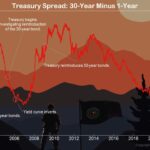 Billionaire investor Warren Buffett, on the heels of releasing his annual report, said that the stock market isn’t in a bubble and “measured against interest rates, stocks actually are on the cheap side compared to historic valuations.” In the same interview, he also warned “That doesn’t mean the stock market can’t go down 20% tomorrow.” A buying opportunity he’d welcome with open arms. It’s good to be Warren.
Billionaire investor Warren Buffett, on the heels of releasing his annual report, said that the stock market isn’t in a bubble and “measured against interest rates, stocks actually are on the cheap side compared to historic valuations.” In the same interview, he also warned “That doesn’t mean the stock market can’t go down 20% tomorrow.” A buying opportunity he’d welcome with open arms. It’s good to be Warren.
Believe me when I tell you that I appreciate the methods Warren Buffett deploys to make money. One big one being that at the core of his methods he’s America’s #1 stockbroker. Between the Woodstock for Investors annual meetings and the “Aw shucks” interviews on CNBC he’s Mr. ABC, always be closing. He’s the steely eyed operator behind that good ‘ole Warren veneer.
That’s why when I hear that Warren Buffett is bullish on stocks I don’t jump right in with Zac Brown abandon. Instead, I begin the tedious work of determining margin of safety, whether it’s mine or my client’s. One thing I can assure you is that it’s different than Mr. Buffett’s.
Which brings me to Buffett’s statement that stocks, measured against interest rates, are on the cheap compared to historic values. It’s not surprising to me, by any stretch, that Buffett is pushing stocks. But he knows that gravity/interest rates are at unnatural lows and that we are, more than likely, living in a universe of reduced returns—investors be warned—in both bonds and stocks.
I learned early in my career from both Dick Young and Warren Buffett that interest rates are gravity.
Before jumping into stocks investors need to know that what lies on the other side of a stock trade, the Grand Canyon or terra firma, is unknown. And that the best way to determine your margin of safety is to follow Dick Young’s advice and locate the North Star and proceed with caution. Dick wrote in the July 2010 issue of his Intelligence Report:
The Real North Star is the inflation-adjusted rate of interest on three-month Treasury bills. The rate of return offered on the Real North Star is viewed as the risk-free rate of interest. The risk-free rate of interest is used as a benchmark to price all other asset classes. If real T-bill rates are low, you shouldn’t expect much from other asset classes.
Read Part I here.
E.J. Smith - Your Survival Guy
Latest posts by E.J. Smith - Your Survival Guy (see all)
- Is Your Retirement Life a Mess? Let’s Talk - April 18, 2024
- Your Survival Guy Learns from Marie Kondo - April 18, 2024
- Don’t Be Left High and Dry - April 18, 2024
- April RAGE Gauge: Real Gold Prices - April 18, 2024
- This Is about Your Survival, Not Anyone Else’s - April 17, 2024














